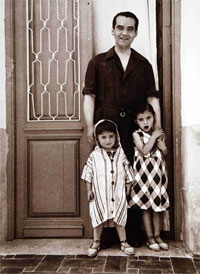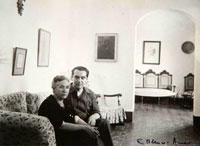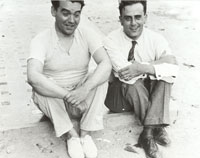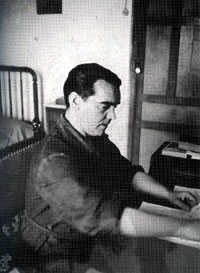

| Presentation | Setting | Huerta de San Vicente 1926-1936 | Federico in the Huerta | Remembrances of Isabel García Lorca | Huerta Remembrances of 1936-2004 | |||||

|
INFORMATION AND |
|
Calendar
|
|
From 15 March to 29 September The king of Harlem |
Search
    [At night] Federico could not sleep; he would go out on his balcony, close the shutters, and sit down to write, according to him, until light came shining in; then he closed the balcony shutters and went to bed. He must have slept soundly, as in that house silence was not guarded. I [used to enter] in his room when he came out to read what he had written. It always caused me surprise and admiration, and he would walk in and ask: Do you like it? And I would answer, yes, but I don´t know why, and he´d respond: that is more than enough, just as you might like a painting, a melody, a landscape. He would open his penetrating eyes wide, and remain quite serious. Isabel García Lorca
|
The day-to-day life of the poet in the summers spent in the Huerta de San Vicente consisted of relaxing with his family, or visiting or receiving his friends (Manuel de Falla, Miguel Pizarro, Antonio Gallego Burín, Manuel Ángeles Ortiz, Eduardo Blanco-Amor, Eduardo Rodríguez Valdivieso…), and above all, writing. If at first the Huerta meant an obligatory visit during those busy first years in the Residencia de Estudiantes, from 1931 onward it became the refuge necessary for his writing, in the context of the re-encounter with the landscape of his origins, family, and the simplicity of country life. The letters written during this period describe aspects of his everyday routine, bear witness of his sprirtual and sentimental crises, and announce the works that he pens, his esthetic evolution. The Epistolario completo edited in 1997 by Andrew Anderson and Christopher Maurer allows an estimation, for the time being, of at least 31 letters written by Lorca at the Huerta.
|
|||||||||||||||||||
 |
At the Huerta de San Vicente García Lorca worked, in part or entirely, on the following:
Federico García Lorca came for a stay at the Huerta de San Vicente on 14 July, 1936. On July 18, the festivity of Saint Federico, the military uprising against Spain´s Second Republic was announced. On the 20 of July the revolt of Granada took place. The poet remained in the Huerta until August 9, and after a series of grave incidents took refuge in the home of the Rosales family, in Granada. He was assassinated in the village of Víznar on 18 August. |

